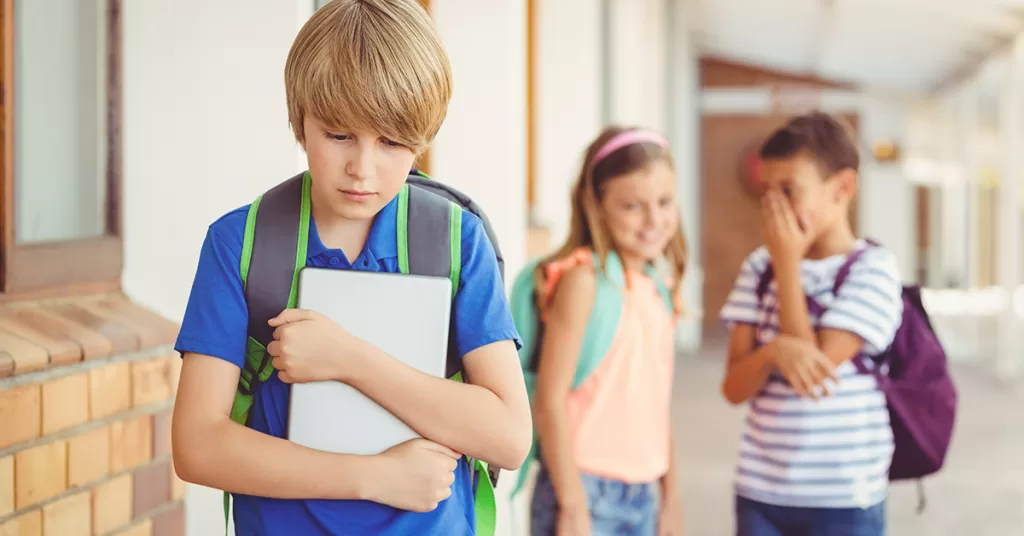According to Affinity Health, a leading provider of high-quality health coverage, bullying is a serious issue that can have profound emotional and psychological effects on children and teens.
“Bullying is a widespread concern that affects millions of children worldwide,” says Murray Hewlett, CEO of Affinity Health.
“Recognising common signs that a child may be experiencing bullying is essential for early intervention and ensuring their emotional well-being.”
What Is Bullying?
Bullying among children refers to repeated and intentional aggressive behaviours that cause harm, distress, or fear to another child. Bullying can occur in various settings, including school, aftercare, extra murals, and sports activities.
The Different Forms of Bullying
Bullying among children can take various forms.
Physical bullying involves actions like hitting, kicking, or pushing.
Verbal bullying encompasses name-calling, taunting, or using hurtful words.
Social bullying involves exclusion, spreading rumours, or manipulating friendships.
Cyberbullying involves using technology to harass, threaten, humiliate, or intimidate others.
Psychological bullying involves intimidation, manipulation, and control.
Signs Your Child May be the Victim of Bullying
Recognising the signs that a child is being bullied is crucial for taking immediate action and providing the support they need. Some signs that may indicate your child is being bullied include:
Emotional Changes: A child being bullied may exhibit increased irritability, anxiety, or depression. They may become withdrawn, show a loss of interest in activities they once enjoyed, or display signs of sadness without an apparent cause.
Changes in Eating and Sleeping Habits: A child who is bullied may suddenly lose their appetite, skip meals, or overeat to cope with their feelings of stress and anxiety. Bullying-related stress can also disrupt a child’s sleep patterns, leading to insomnia, nightmares, or a sudden increase in night waking.
Physical Complaints: A bullied child may experience unexplained physical complaints, such as headaches, stomach aches, or other somatic symptoms. They may also have unexplained injuries, such as bruises, cuts, or scrapes.
Withdrawal from Social Activities: A child who is being bullied may withdraw from social activities, including school clubs, sports, and gatherings with friends. They may become isolated and reluctant to engage with peers.
Decline in Academic Performance: Bullying can affect a child’s ability to concentrate and perform well in school. A noticeable decline in academic performance may be an indicator of bullying-related stress.
Loss of Personal Items: Bullying sometimes involves theft or damage to personal belongings. If a child frequently loses items or comes home with damaged possessions, it may be a sign of bullying.
Changes in Social Media Behaviour: Watch for changes in a child’s social media behaviour, including harassment or exclusion.
Avoiding Certain Routes or Areas: Children who are bullied may try to avoid specific routes or areas where they have encountered their tormentors, such as streets, bus stops, or corners of the school.
Frequent Requests for Money or Belongings: Bullies may extort money or personal belongings from their victims. If a child frequently asks for money or items without a clear explanation, it could be a sign of bullying.
Loss of Confidence and Self-Esteem: A child’s self-esteem and self-confidence may suffer due to bullying. They might start doubting themselves or expressing feelings of worthlessness.

What To Do if Your Child is Being Bullied
The first step in addressing bullying is establishing open communication with your child. Create a safe and non-judgmental space for them to share their experiences and feelings. Let them know that you are there to listen and support them.
Keep a detailed record of each bullying episode, noting dates, locations, individuals involved, and any evidence you can gather, such as screenshots or photos. This documentation may be helpful when discussing the issue with school authorities.
If bullying occurs, contact school staff, including teachers, counsellors, or the principal. Share the documented information and request a meeting to discuss the situation. Collaborate with the school to develop strategies to stop bullying and create a safe environment for your child.
Empower your child with coping strategies to handle bullying situations. You should encourage them to avoid confrontations, use assertive communication, and seek help from trusted adults when needed. Teach them the importance of staying composed and assertive when responding to bullies.
If your child is experiencing severe emotional distress or displays signs of anxiety or depression due to bullying, consider involving a therapist, counsellor, or online support group like SADAG or Childline South Africa. These professionals can provide the necessary support and strategies to help your child cope with the emotional impact of bullying.
In extreme cases where bullying involves threats or poses a real danger to your child’s safety, don’t hesitate to involve law enforcement.
Lastly, stay involved in your child’s life and support them while closely monitoring the situation to ensure the bullying stops and doesn’t resurface.





























